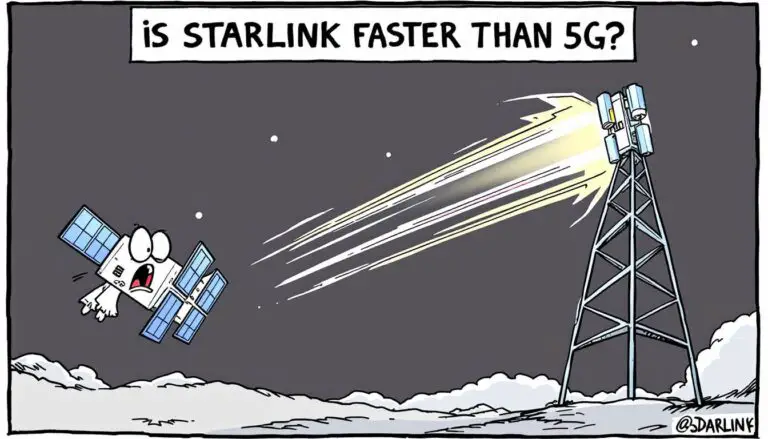Welcome to our guide on how to separate the 2.4 and 5 GHz frequencies on your Xfinity router or modem. In this article, we’ll show you the most reliable ways to manage your Xfinity Wi‑Fi network in 2025, including when band splitting is allowed, when it’s blocked by hardware or features, and what to do on newer gateways. Whether you’re experiencing interference issues or simply want more control over your network, separating the Wi‑Fi bands can help—when your model and setup support it.
By the end of this guide, you’ll know how to separate your Xfinity Wi‑Fi networks using the Xfinity app (primary method) and, where available, the Admin Tool. You’ll also see important notes for XB7/XB8 gateways, xFi Pods, and 6 GHz (Wi‑Fi 6E) behavior.
Quick Step-by-Step Guide
Here’s the fastest way to check and separate the 2.4 GHz and 5 GHz bands on an Xfinity gateway using the Xfinity app:
- Open the Xfinity app: Sign in with your Xfinity ID on your phone.
- Go to Wi‑Fi settings: Tap
Connect>See Network(orWi‑Fi). - Find Split Bands: Tap the pencil/edit icon. If your model/firmware supports it, enable the option to use different names for 2.4 GHz and 5 GHz.
- Rename SSIDs: Give each band a unique name, e.g.,
HomeNet‑2.4GHzandHomeNet‑5GHz. Avoid names like “5G” that can be confused with cellular. - Save and reconnect: Save your changes and reconnect devices to the appropriate band.
- If you don’t see Split Bands: xFi Pods/Extenders enforce one SSID and hide this option. Some models/firmware (often XB8/tri‑band) restrict splitting; this can be expected behavior.
Important Note
It’s important to note that having separate u003ca href=u0022https://afrozahmad.com/blog/what-is-ssid-for-wifi/u0022 target=u0022_blanku0022 aria-label=u0022SSIDs (opens in a new tab)u0022 rel=u0022noreferrer noopeneru0022 class=u0022ek-linku0022u003eSSIDsu003c/au003e foru003cstrongu003e 2.4 GHzu003c/strongu003e and u003cstrongu003e5 GHzu003c/strongu003e can help with manual device placement and onboarding, especially for smart-home gear that prefers 2.4 GHz.u003cbru003eHowever, band splitting may reduce automatic band steering and seamless roaming on some setups, and certain gateways or features (like xFi Pods) disable it entirely.
Key Takeaways:
- Separating the 2.4 and 5 GHz bands can enhance connectivity and performance when supported by your gateway and setup.
- You’ll typically manage band names in the Xfinity app. On some models, the Admin Tool can help but may need to be enabled first.
- The 2.4 GHz band has a longer range but is more susceptible to interference, while the 5 GHz band offers faster speeds at shorter range.
- xFi Pods/Extenders enforce one SSID and disable band splitting. Some XB8 tri‑band builds also restrict separate naming.
- Follow the step-by-step instructions below to optimize your Xfinity Wi‑Fi—starting with the app method.
Why Separate 2.4 GHz and 5 GHz On Xfinity?
Before we dive into the “how,” let’s discuss the “why”. Why would you want to separate these two Wi‑Fi frequencies to create split SSIDs on your Xfinity router?
Better Performance: Certain devices perform better on specific frequencies. Typically, 2.4 GHz offers better range but slower speeds, while 5 GHz provides faster speeds but less range. Separating allows you to connect each device to the band that best fits its needs.
Less Interference: By allocating devices across both bands, you can reduce congestion and improve overall Wi‑Fi performance—especially in crowded apartments or townhomes.
Device Compatibility: Some older or IoT devices only recognize the 2.4 GHz band. Splitting the bands can help these devices connect and stay connected. If pairing fails, try WPA3‑Personal Transition (or WPA2 if offered) on 2.4 GHz and retry.
Deciding Between 2.4 GHz and 5 GHz: Which to Choose?
For broader coverage and compatibility, 2.4 GHz is the go‑to. If your priority is speed and you’re close to the gateway, 5 GHz is often superior for streaming, gaming, and large downloads. On tri‑band gateways with 6 GHz (Wi‑Fi 6E), compatible devices may automatically prefer 6 GHz for short‑range, high‑speed connections; some firmware does not allow naming 6 GHz separately.
Pros and Cons of separating the 2.4 GHz and 5 GHz bands
Here’s a table outlining the pros and cons of separating the 2.4 GHz and 5 GHz bands on an Xfinity Wi‑Fi network:
| Pros | Cons |
|---|---|
| Better Network Management – Manually place devices on the best band for range or speed. | Manual Selection Required – Devices won’t automatically pick the best band if you split. |
| Reduced Interference – 5 GHz typically sees less interference than 2.4 GHz. | Limited Range for 5 GHz – Works best near the gateway. |
| Optimized Performance – Put high‑bandwidth activities on 5 GHz; longer‑range devices on 2.4 GHz. | Model/Firmware Limits – Some gateways (often XB8/tri‑band) restrict splitting; Pods disable it. |
| Targeted Connectivity – Useful for onboarding IoT devices that require 2.4 GHz. | Band Steering Loss – Splitting can reduce automatic roaming/steering benefits. |
Preparing to Separate Your Wi‑Fi Bands
To successfully separate your Wi‑Fi bands, you’ll need a few things:
- An Xfinity dual‑band or tri‑band gateway (e.g., XB6/XB7/XB8). Availability of splitting varies by model and firmware.
- A device connected to your home network with the Xfinity app installed.
- Your Xfinity Admin Tool password if you plan to use it. The default Admin username is
admin, and the password is the default gateway password printed on your gateway’s label (or your custom Admin password).
Make sure you’re connected to your Xfinity network before starting. On some firmware, you may need to enable Admin Tool access in the Xfinity app first: Wi‑Fi > View equipment > Advanced settings.
Additional Considerations
- Disconnect xFi Pods/Extenders: If you’re using xFi Pods or Storm‑Ready WiFi, they enforce a single SSID and disable band splitting. Remove them in the app to expose the Split Bands option.
- Model/Firmware limits: Band splitting availability depends on your gateway and build. XB7 may allow it in the app; XB8 (tri‑band/6E) often restricts separate naming, and settings may revert automatically.
- 6 GHz on Wi‑Fi 6E: On tri‑band gateways, 6 GHz may be combined with 2.4/5 GHz for steering. Some firmware doesn’t allow naming 6 GHz separately.
- Security mode for legacy devices: If older 2.4 GHz devices won’t join, set 2.4 GHz to WPA3‑Personal Transition (or WPA2 if available), then retry pairing.
Step-by-Step Guide to Separating Your WiFi Bands
Separating the 2.4 GHz and 5 GHz bands on an Xfinity gateway can optimize your home Wi‑Fi network when supported. Start with the Xfinity app; use the Admin Tool only if your model allows and the setting isn’t blocked by firmware or features.
Step 1: Connect to Your Wi‑Fi Network
Ensure your device is connected to your Xfinity Wi‑Fi network. This is essential for managing settings.
Step 2: Access the Xfinity Admin Tool
If you’re using the Admin Tool, open a web browser and navigate to 10.0.0.1. Note: many Wi‑Fi settings on newer gateways are app‑only, and Admin access may need to be enabled in the Xfinity app first.
Step 3: Sign In to the Admin Tool
Log in at 10.0.0.1 with username admin and the default gateway password printed on your gateway’s label (or your custom Admin password). If you can’t access the page or the credentials don’t work, manage Wi‑Fi in the Xfinity app or contact Xfinity support.
Step 4: Go to Wi‑Fi Settings
Once logged in, select Gateway > Connection > Wi‑Fi to view 2.4 GHz and 5 GHz settings. On many XB6+ gateways, options are limited because channel/mode are auto‑managed.
Step 5: Edit Wi‑Fi Names (SSIDs)
Click Edit next to the band you want to configure. Most XB6+ gateways auto‑manage channels, so focus on names (SSIDs) and passwords instead of channel selection.
Step 6: Separate the Bands
Create two different SSIDs—one for 2.4 GHz and one for 5 GHz—so you can choose the desired band per device. Example names: YourNetworkName‑2.4GHz and YourNetworkName‑5GHz.
- Rename the SSID for the 2.4 GHz band to something identifiable, such as
YourNetworkName‑2.4GHz. - Rename the 5 GHz band to, for example,
YourNetworkName‑5GHz. - Use a strong, unique password for each SSID. If legacy devices won’t join, try WPA3‑Personal Transition on 2.4 GHz (or WPA2 if offered).
Step 7: Save Your Settings
After making changes, click Save Settings. Your gateway may reboot to apply the new configuration.
Step 8: Reconnect Your Devices
Reconnect devices to your preferred band. Choose 2.4 GHz for range and through‑wall coverage; choose 5 GHz for higher speeds and lower interference. If you later add xFi Pods/Extenders, note that the network will be merged back into a single SSID.
Alternative Method
How to Separate 2.4 and 5 GHz Bands – Using the Admin Tool (if available)
- Connect: Ensure your device is on your Xfinity Wi‑Fi network.
- Open: In a browser, go to
10.0.0.1. If needed, enable Admin Tool access in the Xfinity app first. - Sign in: Username
admin; password is the default printed on the gateway label (or your custom Admin password). - Navigate:
Gateway>Connection>Wi‑Fi. - Separate SSIDs: Edit the 2.4 GHz and 5 GHz SSIDs to different names. Channel selection is typically auto‑managed and not user‑editable.
- Save: Apply changes and reconnect devices. If settings revert, your model/firmware may not support persistent splitting.
Additional Tips for Your Xfinity Wi‑Fi
- Regularly update your gateway’s firmware (this happens automatically on most Xfinity gateways).
- Use a Wi‑Fi analyzer to check signal strength and interference, then place the gateway centrally and elevated for best coverage.
- If the Split Bands option is missing or reverts, remove xFi Pods/Extenders, power‑cycle the gateway, and try again in the app. Some models (especially XB8/tri‑band) may not support separate names—consider bridge mode plus a third‑party router if you require full manual control.
Conclusion
By taking a few minutes to manage your Xfinity gateway’s 2.4 GHz and 5 GHz networks—when supported—you can fine‑tune coverage and speed for your home Wi‑Fi.
With less congestion and better device placement, your devices can get the bandwidth they need for top performance. And you’ll gain more control over how smart‑home gear and high‑speed devices connect.
Don’t settle for defaults if your setup allows it—use the Xfinity app first, and the Admin Tool where available, to unlock the full potential of your dual‑ or tri‑band gateway.
The knowledge you’ve gained will pay off through faster streaming, smoother gaming, and more reliable smart homes—even if your particular model limits band splitting.
FAQs
Here are answers to some commonly asked questions:
Does splitting my Wi‑Fi reduce speeds?
It depends. Splitting can help with device onboarding and manual placement, but you may lose automatic band steering and seamless roaming. Some homes see better results split; others perform better with a single SSID.
Which devices should use 2.4 GHz vs 5 GHz?
Use 5 GHz for newer dual‑band devices when you’re near the gateway (streaming boxes, gaming consoles, laptops). Reserve 2.4 GHz for legacy or IoT devices that need more range or only support 2.4 GHz.
Do all Xfinity gateways support splitting bands?
No. Support varies by model and firmware. For example, XB7 may allow splitting in the Xfinity app, while many XB8 (tri‑band/6E) setups restrict separate naming. If xFi Pods/Extenders are attached, splitting isn’t supported.
Is band splitting necessary?
It’s optional. Split bands can improve control and help certain devices connect, but a single SSID with band steering is simpler and can perform better for roaming. If splitting is unavailable, consider bridge mode plus a third‑party router for more control.
- MikroTik CRS305-1G-4S+ Review: The Ultimate Budget SFP+ Switch Guide - December 25, 2025
- 10 Best Network Switches for Home Networks in 2026 (Top Picks) - December 24, 2025
- 7 Best Budget Routers For Small Business Networks (Under $200) - December 22, 2025



